Pyramids have fascinated people for thousands of years, standing as monumental symbols of ancient engineering and cultural significance. Built by civilizations across different continents, these incredible structures vary widely in size, shape, and purpose. From the grand limestone pyramids of Egypt to the intricate stone temples of Mesoamerica, each pyramid tells a unique story of the society that created it. Often used as burial sites, ceremonial centers, or places of worship, pyramids reveal the architectural ingenuity and spiritual beliefs of past civilizations. Here, we’ll explore the world’s largest pyramids, highlighting their impressive sizes and the history they hold within their towering walls.
The Great Pyramid of Giza (Egypt)
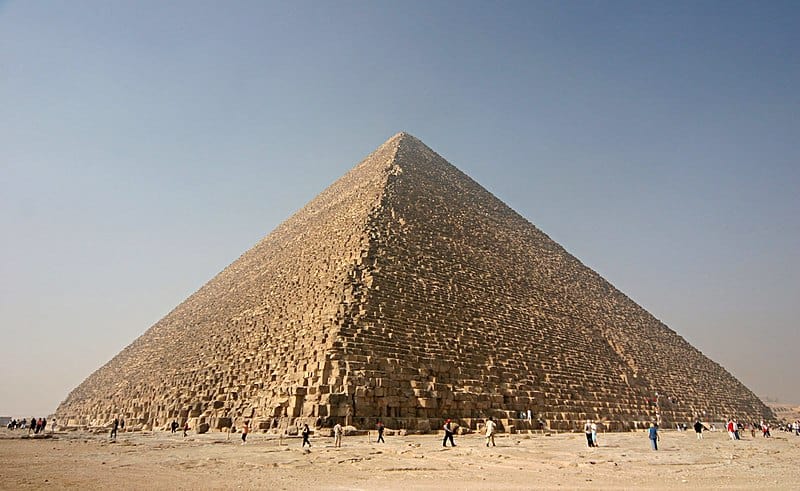
The Great Pyramid of Giza, also known as Khufu’s Pyramid, is one of the most iconic structures in Egypt and the world. Originally standing at 146.6 meters (481 feet), it remains the tallest pyramid on Earth even after thousands of years. Built around 2560 BC, this pyramid showcases the ancient Egyptians’ architectural prowess and serves as a burial site for Pharaoh Khufu. Despite erosion, it still stands at an impressive 138.8 meters (455 feet) today. Made with an estimated 2.3 million stone blocks, it weighs approximately 5.9 million tons. Each side of the pyramid’s base measures about 230.4 meters (756 feet). With precision engineering, it was aligned almost perfectly with the cardinal points.
Pyramid of Khafre (Egypt)
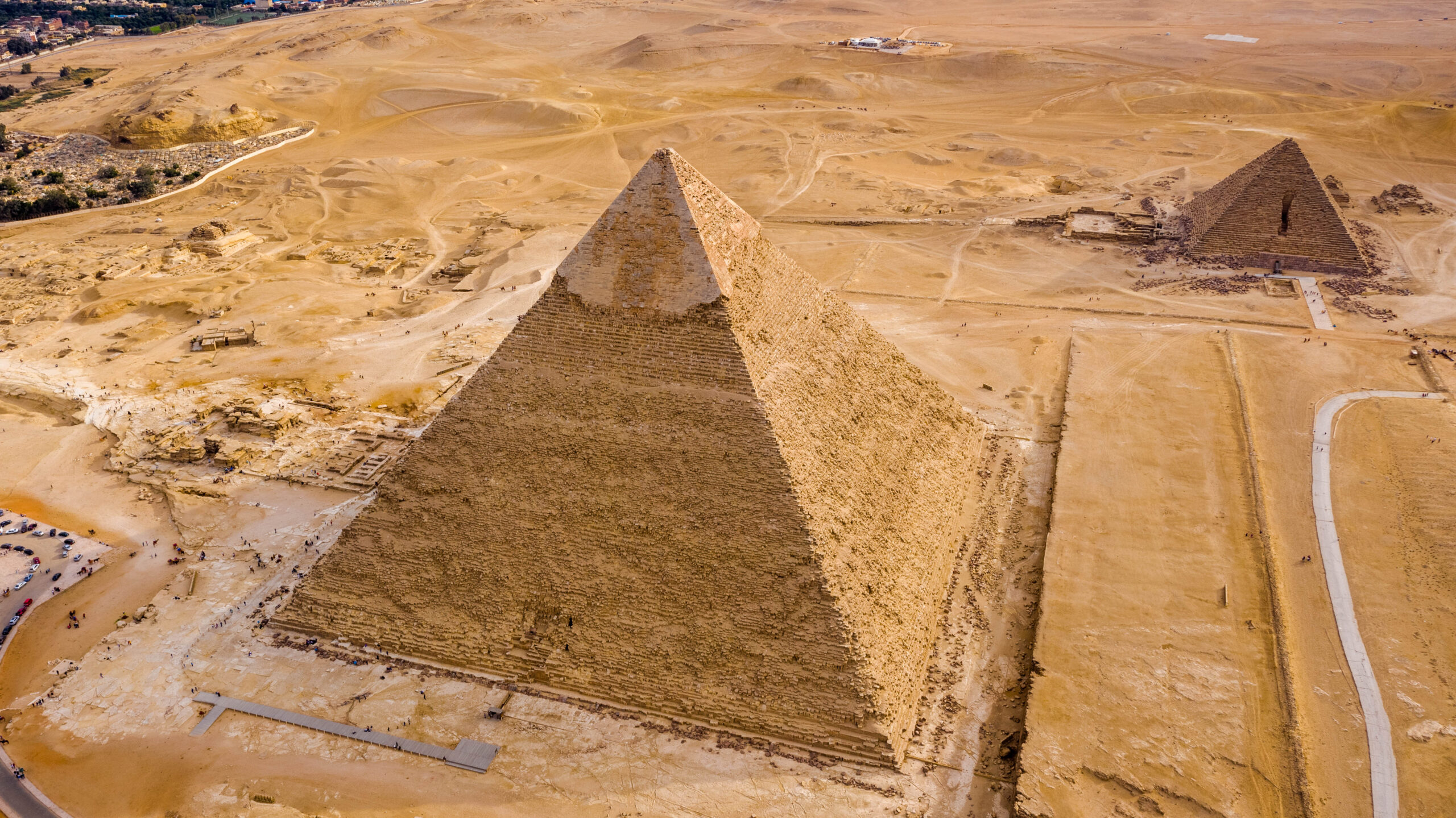
Standing beside the Great Pyramid, the Pyramid of Khafre reaches a height of 136.4 meters (448 feet). This pyramid was constructed for Pharaoh Khafre, the son of Khufu, around 2570 BC. It is famous for its distinctive layer of smooth limestone at the top, which gives it a unique appearance. Although slightly shorter than Khufu’s Pyramid, its base is only slightly smaller at 215.5 meters (706 feet) per side. The interior includes complex passageways and chambers intended for the Pharaoh’s afterlife. The alignment of the pyramid is precise, showing the mathematical sophistication of its builders. Together with the Great Sphinx, Khafre’s Pyramid adds to the grandeur of the Giza plateau.
Red Pyramid of Dahshur (Egypt)
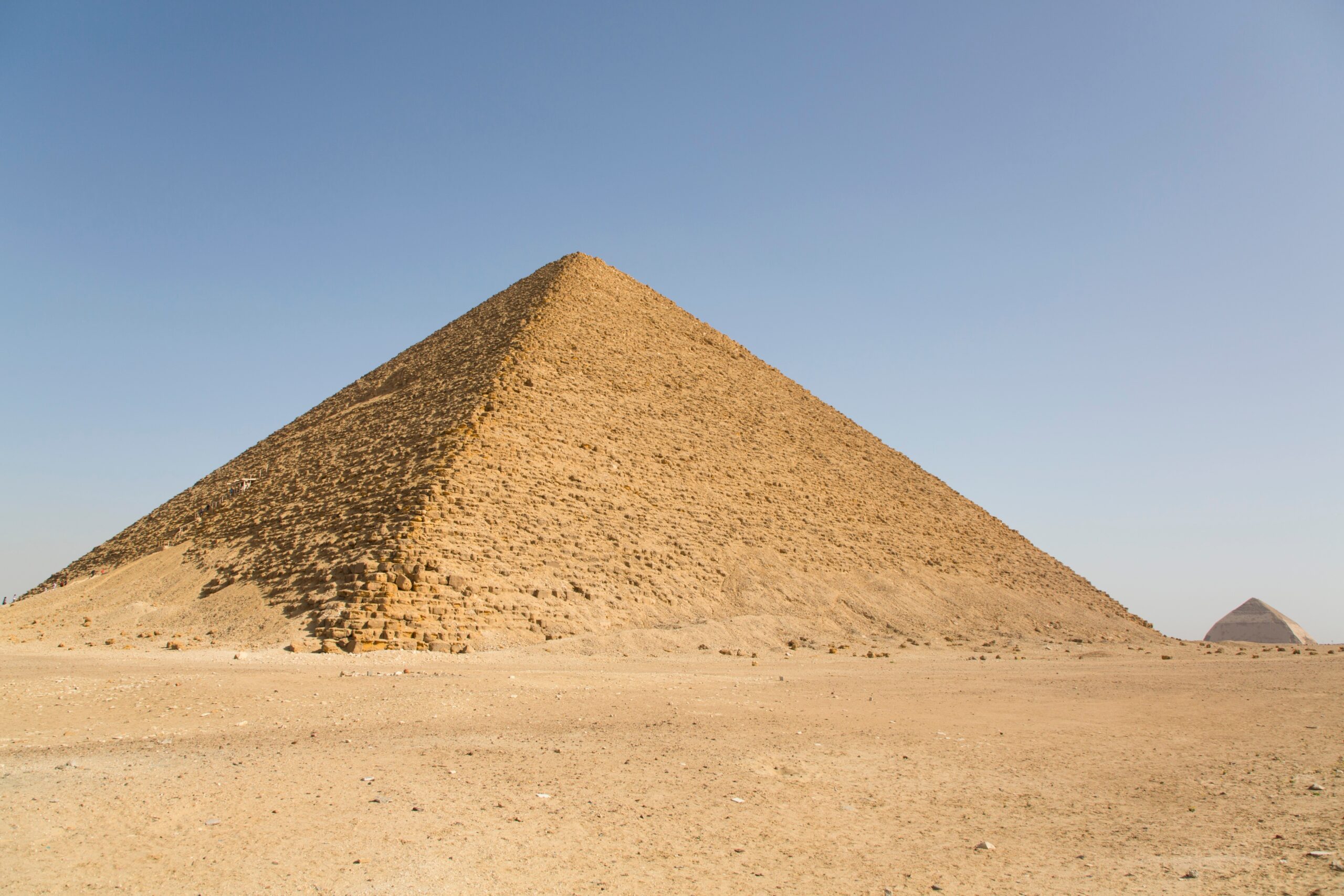
The Red Pyramid, located in Dahshur, is Egypt’s first successfully constructed “true” smooth-sided pyramid. Standing 105 meters (344 feet) tall, it was built during the reign of Pharaoh Sneferu around 2600 BC. Known for its reddish limestone, this pyramid has a broad base measuring 220 meters (722 feet) per side. It was the first large-scale pyramid to achieve a smooth exterior, which later inspired the construction of Giza’s pyramids. This pyramid’s interior chambers are accessed through a narrow descending corridor, leading to two spacious rooms. Its construction marked a significant advancement in pyramid building techniques. The Red Pyramid’s influence is evident in Egypt’s later architectural achievements.
Bent Pyramid (Egypt)
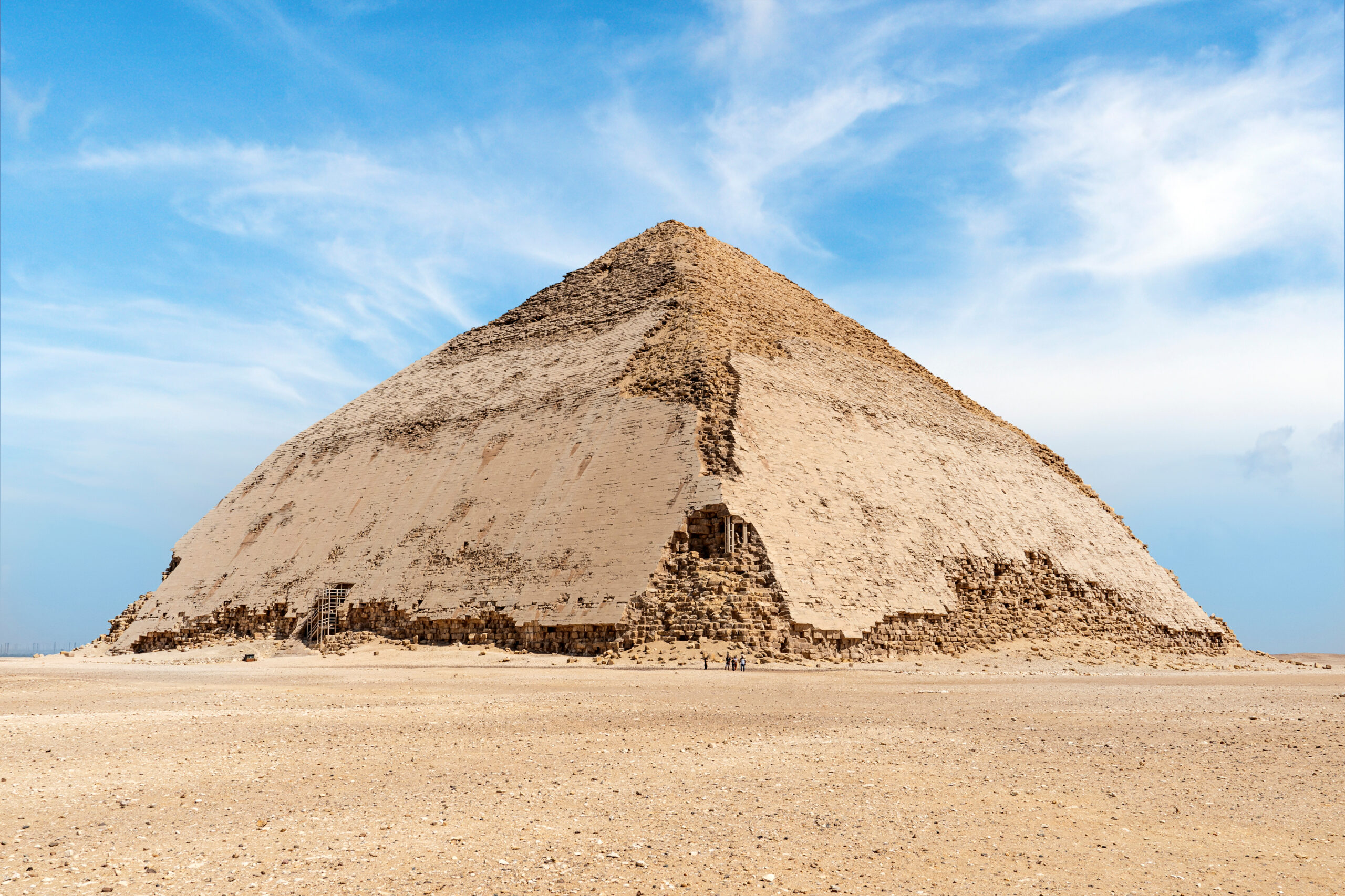
The Bent Pyramid, also in Dahshur, is another creation of Pharaoh Sneferu, standing 104.7 meters (344 feet) tall. Built around 2600 BC, this pyramid is notable for its unique shape, with a sudden change in angle about halfway up. Originally intended to have steep sides, the builders altered the slope to a gentler angle, likely due to stability concerns. It has a base measuring 188 meters (617 feet) per side, reflecting the ambition of its creators. Unlike most pyramids, the Bent Pyramid still retains a portion of its smooth limestone casing. The pyramid’s interior features complex passageways and multiple chambers. Its unusual design offers valuable insight into the experimentation of early pyramid construction.
Pyramid of the Sun (Mexico)
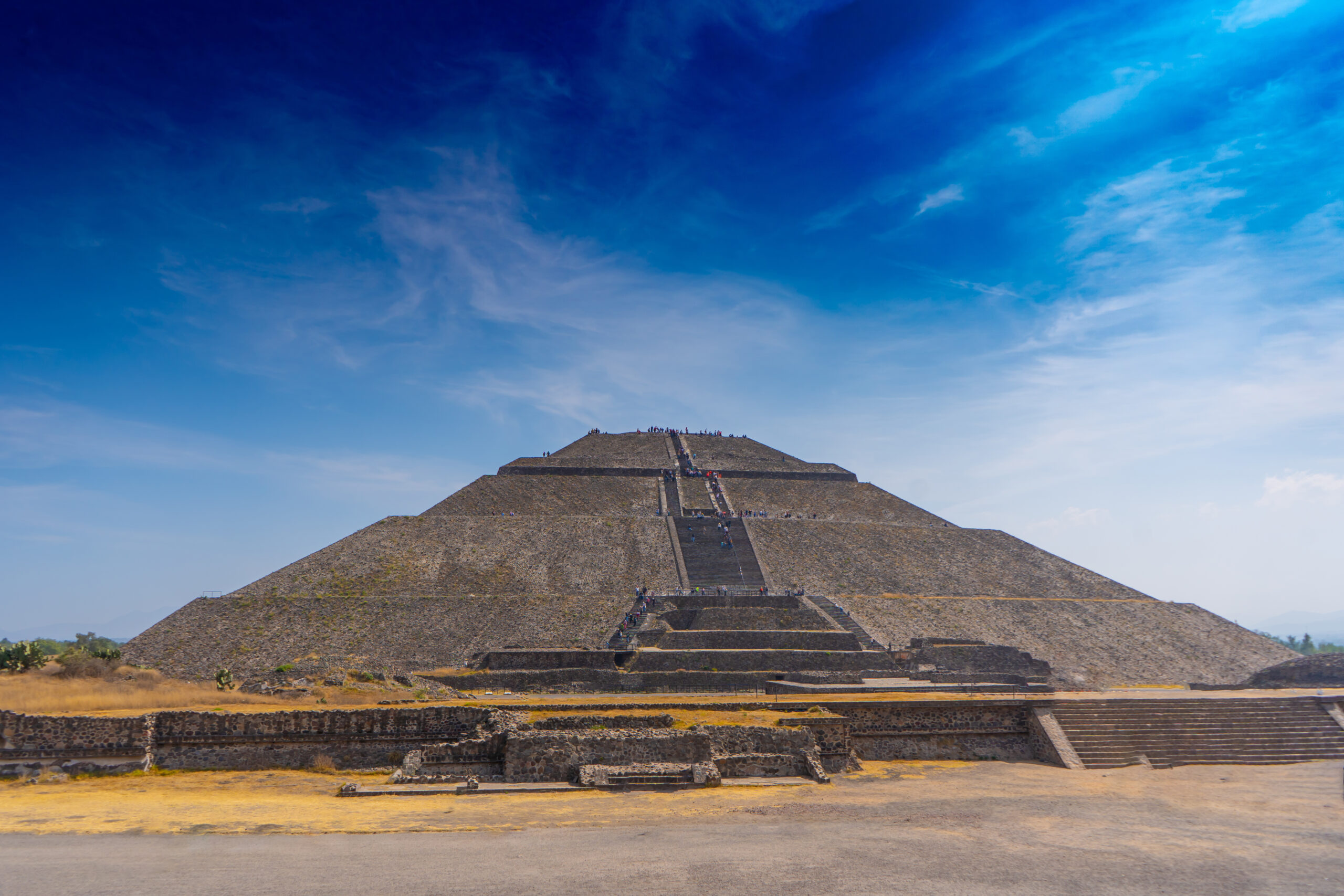
Located in Teotihuacan, the Pyramid of the Sun is the largest structure in this ancient Mesoamerican city. Standing at 65 meters (213 feet) tall, it was built around 200 AD. The pyramid has a base measuring approximately 225 meters (738 feet) on each side, making it one of the most massive pyramids in the world by volume. Unlike Egyptian pyramids, it was likely used for ceremonial purposes rather than as a tomb. The structure is made from millions of cubic meters of stone and adobe. Aligned with astronomical phenomena, it reflects the Mesoamerican understanding of the cosmos. Today, it remains one of Mexico’s most visited ancient landmarks.
Pyramid of the Moon (Mexico)
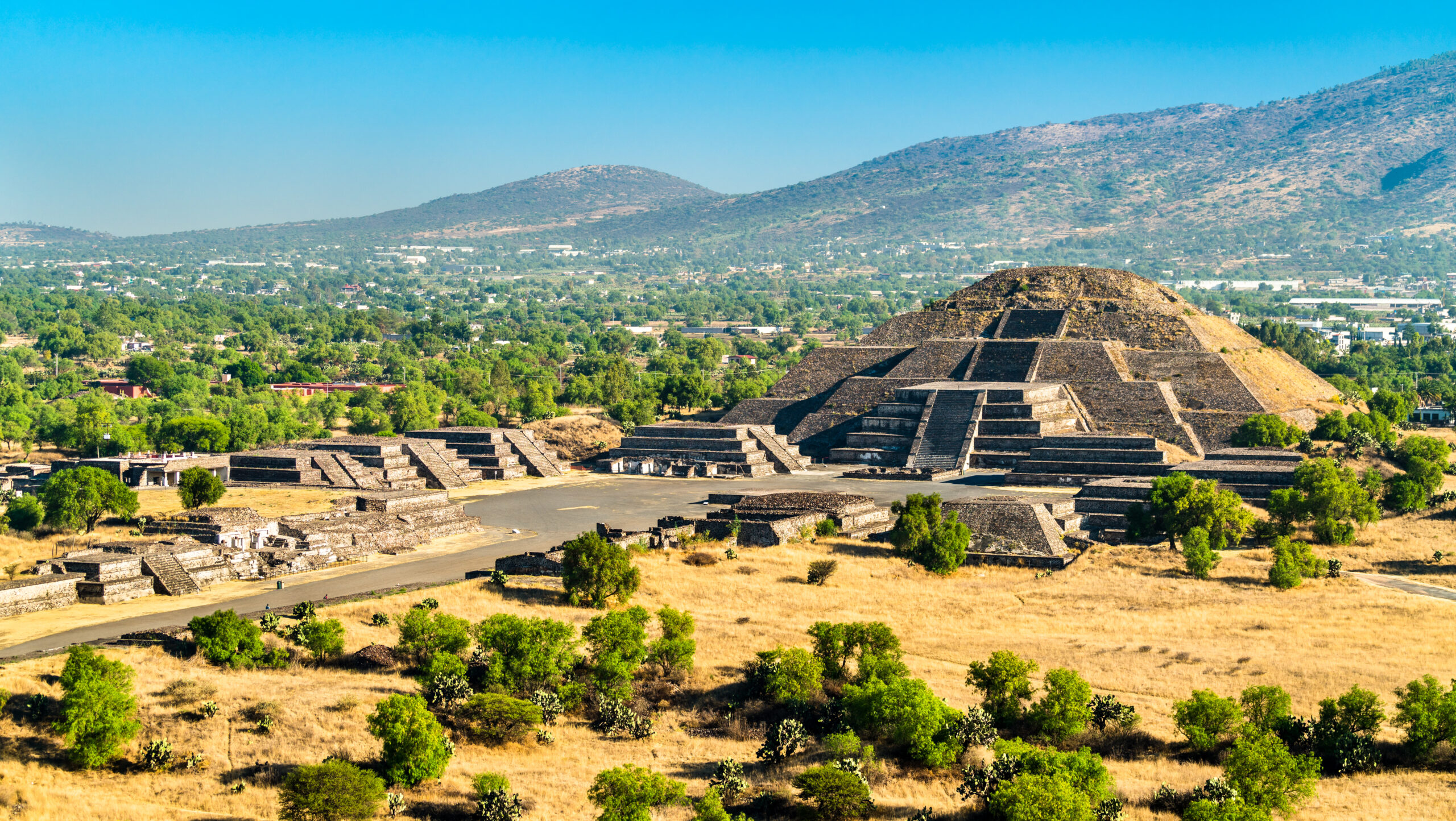
Another impressive pyramid in Teotihuacan, the Pyramid of the Moon stands 43 meters (141 feet) tall. Built around 200-250 AD, it is the second-largest pyramid in Teotihuacan. Its base measures about 150 meters (492 feet) per side, and it has a series of platforms leading to a central structure on top. The pyramid likely served ceremonial functions, with its top platform offering a view of the Avenue of the Dead. Excavations have uncovered multiple burial sites within the structure, possibly indicating its religious significance. The Pyramid of the Moon aligns with the surrounding mountains, symbolizing Teotihuacan’s relationship with nature. It remains an essential part of Mexican heritage.
La Danta Pyramid (Guatemala)

La Danta, located in the ancient Maya city of El Mirador, is considered one of the largest pyramids by volume. Standing at about 72 meters (236 feet) tall, it dates back to around 300 BC. The structure has a massive base area, with platforms that expand the total volume to approximately 2.8 million cubic meters. This pyramid served as both a religious and administrative center for the Maya civilization. Constructed from limestone blocks, it took immense labor to build this massive structure. The pyramid’s summit offers a panoramic view of the surrounding jungle. Today, La Danta remains an incredible example of Maya engineering and culture.
Temple of the Inscriptions (Mexico)
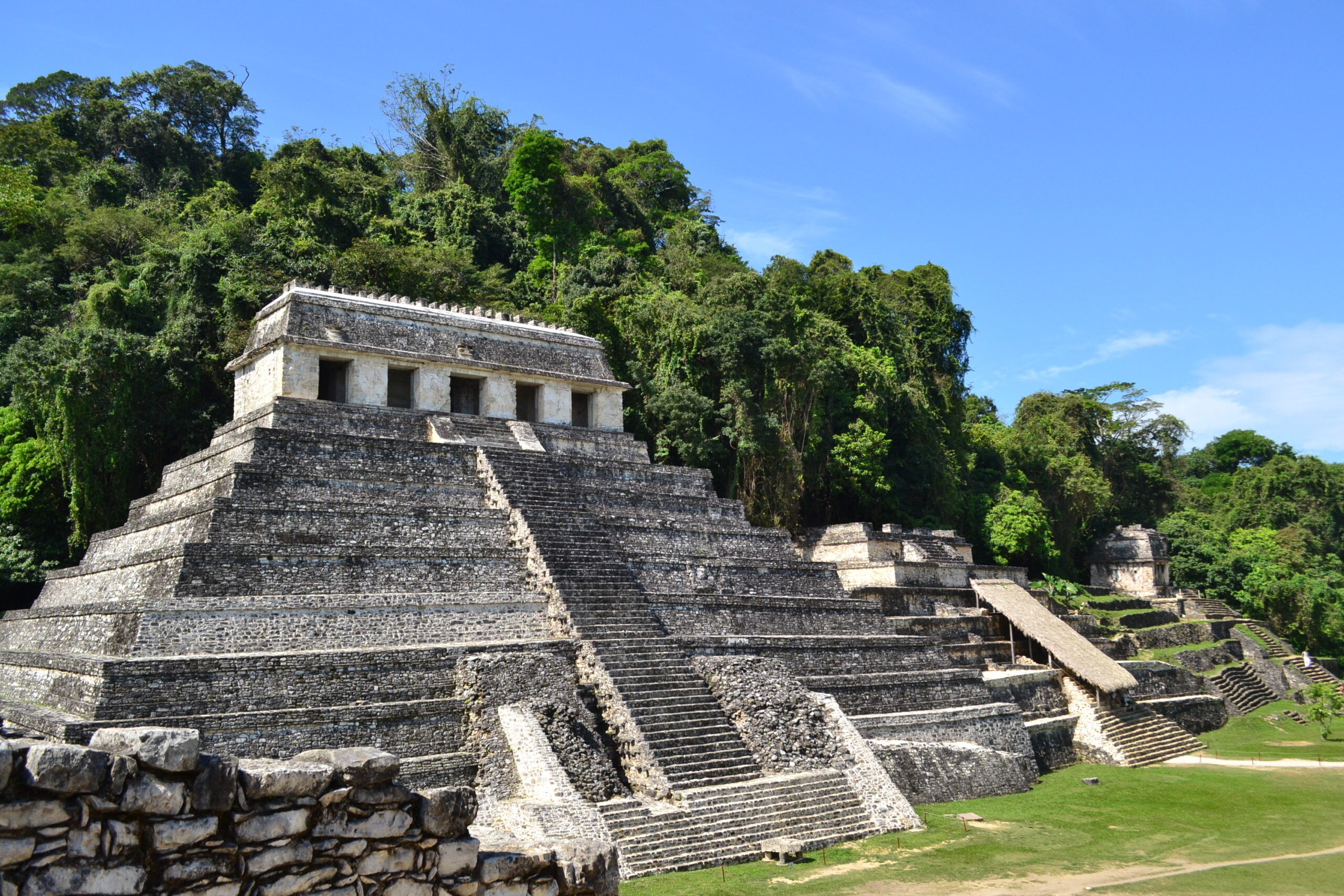
Located in Palenque, the Temple of the Inscriptions is a stepped pyramid standing 27 meters (89 feet) tall. Built around 683 AD, it served as the tomb for the Maya ruler Pakal the Great. Its base measures approximately 60 meters (197 feet) per side, and its steep stairways lead to an upper temple. Inside, Pakal’s elaborate sarcophagus was discovered, adorned with carvings and inscriptions. The pyramid’s name derives from the inscriptions on its walls, detailing Pakal’s reign and achievements. Surrounded by dense jungle, it stands as a testament to Maya architectural skill. Today, it is one of the best-preserved Maya tombs.
Quetzalcoatl Pyramid (Mexico)
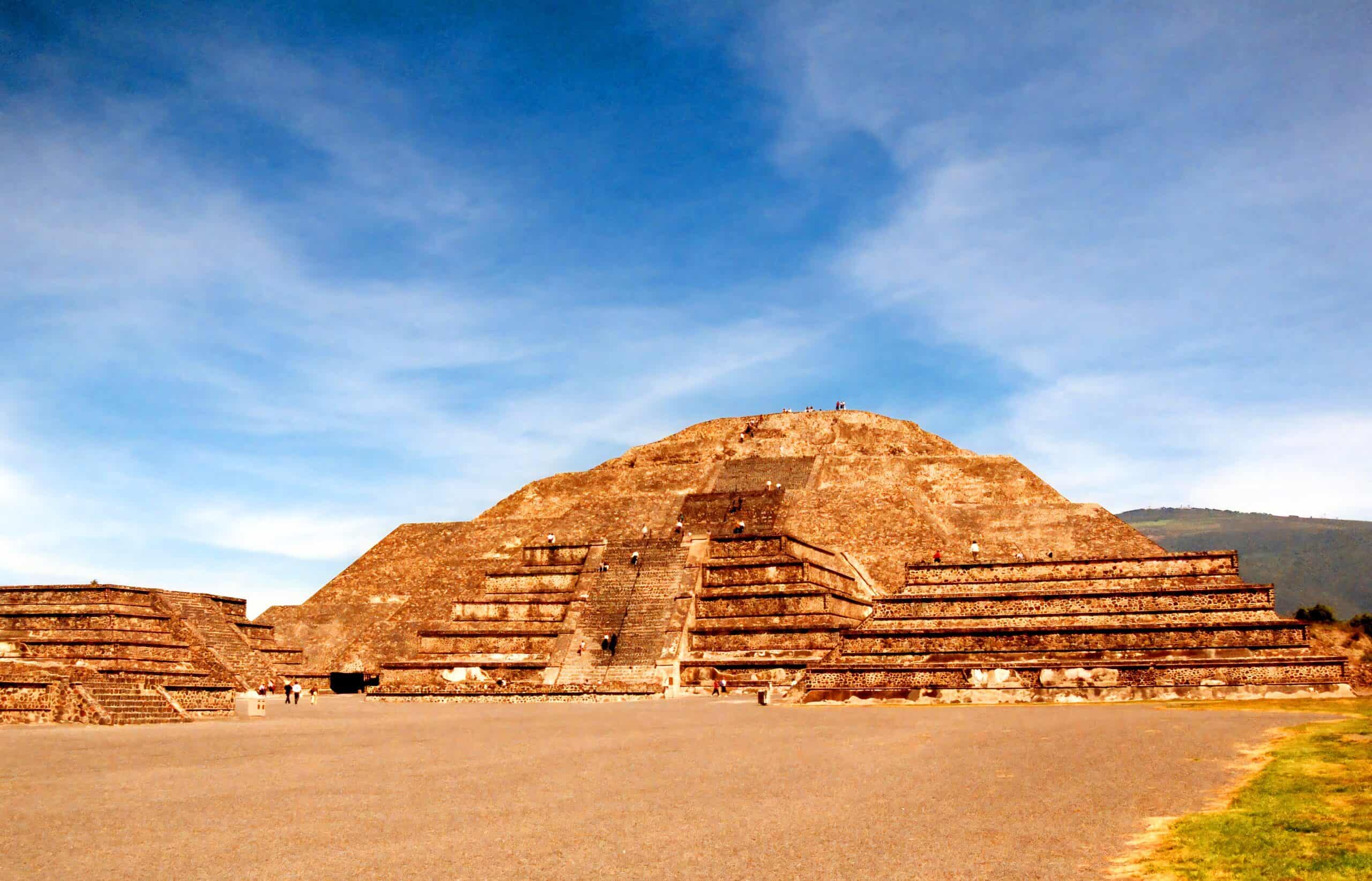
The Temple of the Feathered Serpent, or Quetzalcoatl Pyramid, is a unique structure in Teotihuacan, standing 20 meters (66 feet) tall. Built around 150 AD, this pyramid is decorated with carvings of Quetzalcoatl, the Feathered Serpent deity. Its base measures approximately 65 meters (213 feet) per side, showcasing intricate stonework and reliefs. Unlike other pyramids, this one was a center for sacrifices, as indicated by the remains found at its base. This pyramid holds significant religious meaning, reflecting the cultural importance of Quetzalcoatl in Mesoamerica. Its facade, lined with serpent and rain god sculptures, makes it visually distinct. Today, it captivates visitors with its artistry and historical significance.
Pyramid of Teti (Egypt)
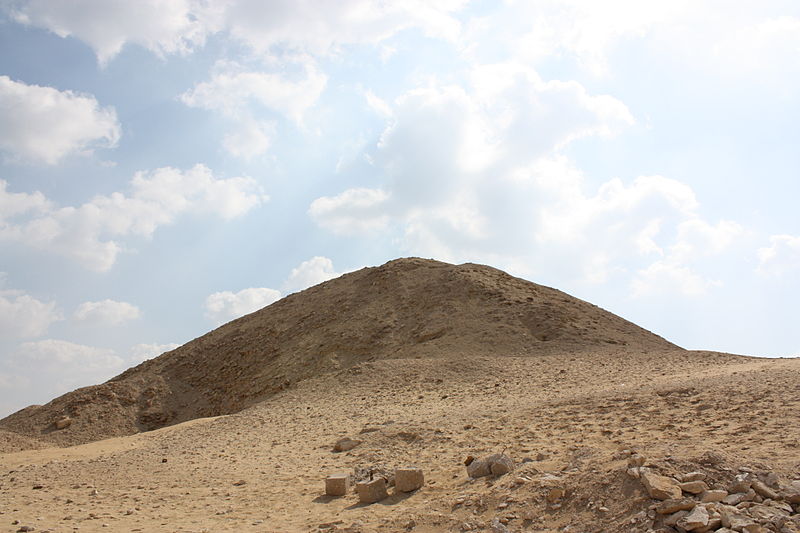
The Pyramid of Teti, built for the first Pharaoh of the Sixth Dynasty, stands at approximately 52.5 meters (172 feet) tall. Constructed around 2345 BC, it has a base measuring 78.5 meters (258 feet) per side. Inside, passages and chambers are adorned with Pyramid Texts, the oldest known religious texts in the world. The Pyramid of Teti is notable for these texts, which include spells meant to protect and guide the pharaoh in the afterlife. Though modest in height compared to other pyramids, Teti’s Pyramid represents a transition in Egyptian burial practices. It is made primarily of limestone and has suffered from erosion over the centuries. Some of its outer casing remains, hinting at its former grandeur. Located in Saqqara, it contributes to the region’s rich history as a necropolis for Egypt’s earliest rulers.
Monks Mound (United States)
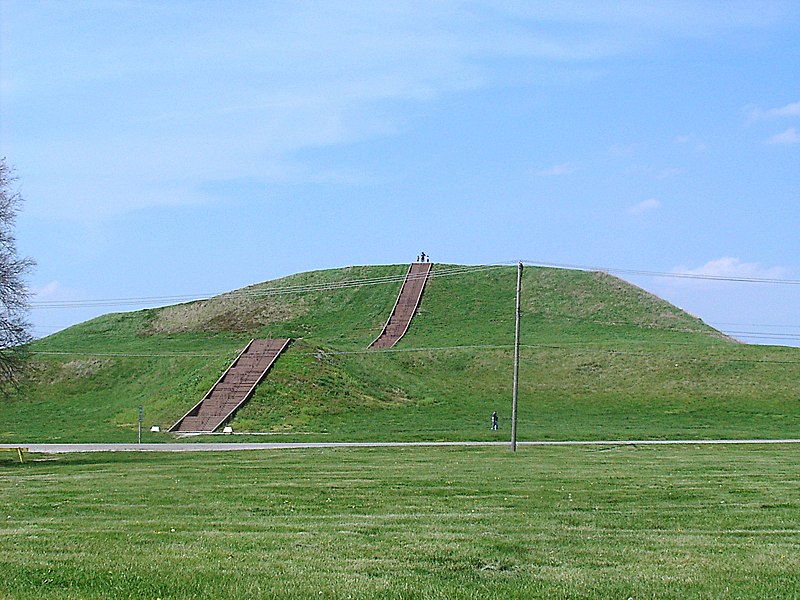
Monks Mound, located in Cahokia, Illinois, is the largest pre-Columbian earthwork in the Americas. It stands approximately 30 meters (100 feet) tall, though its base spans about 291 meters (951 feet) by 236 meters (774 feet). Built by the Mississippian people around 900–1200 AD, it is thought to have been a ceremonial and residential structure for leaders. Unlike stone pyramids, Monks Mound was constructed from millions of cubic feet of earth and clay. The mound is named after French Trappist monks who lived nearby in the early 19th century. Its summit includes a large flat area, likely used for rituals or gatherings. Today, Monks Mound stands as a testament to the complex societies of ancient North America.
The Pyramid of Cestius (Italy)
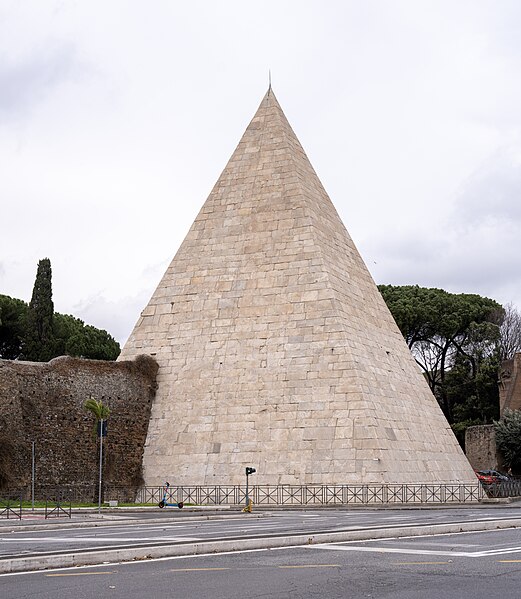
Rome’s Pyramid of Cestius stands out as a rare example of a pyramid in Europe, reaching 37 meters (121 feet) tall. Built between 18 and 12 BC, it served as the tomb for Gaius Cestius, a Roman magistrate and member of the religious corporation of the Epulones. Its base measures approximately 29.5 meters (97 feet) per side, and it is constructed from brick-faced concrete with a white marble covering. The pyramid reflects the Roman fascination with Egyptian culture after Egypt became part of the Roman Empire. Inside, there is a small burial chamber with frescoed walls, although much of its decoration has been lost over time. Surrounded by Rome’s Aurelian Walls, it remains a striking and unusual monument. Today, it serves as a reminder of Rome’s historical connections to Egypt.
Pyramid of Menkaure (Egypt)
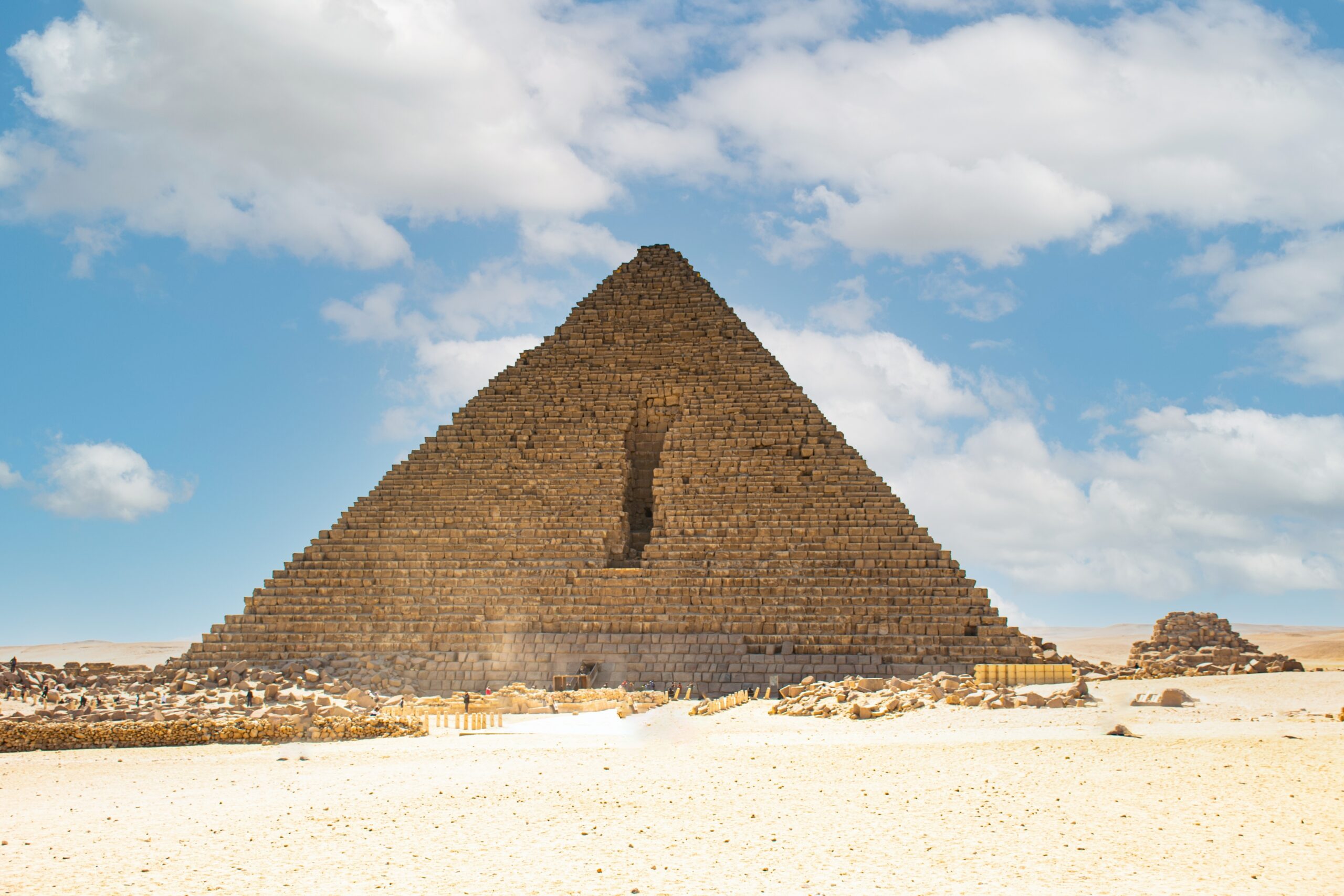
The Pyramid of Menkaure, the smallest of the three main pyramids of Giza, stands at 65 meters (213 feet) tall. Built around 2510 BC, it served as the tomb of Pharaoh Menkaure, a successor of Khafre. The pyramid’s base measures about 108.5 meters (356 feet) per side, and it was originally covered with polished white limestone. While smaller than the other Giza pyramids, it still required tremendous labor and resources. Menkaure’s pyramid features chambers and passages with niches for statues. Interestingly, it also has remnants of granite casing near its base, giving it a unique appearance. Despite its size, it is an essential part of the Giza necropolis.
Mastaba of Faraoun (Egypt)
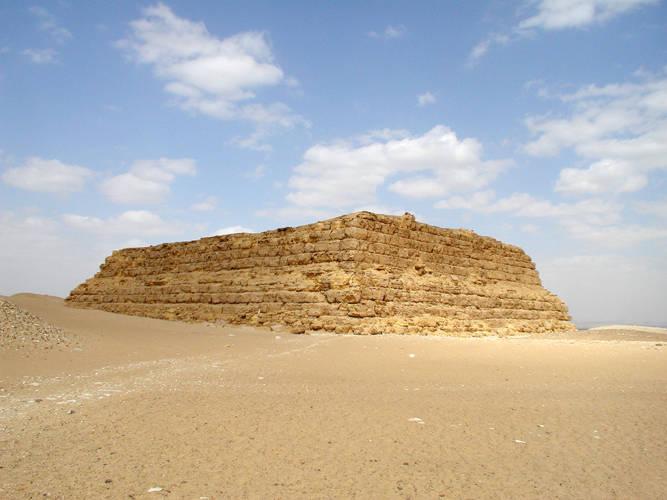
The Mastaba of Faraoun, located in Saqqara, is a large tomb structure measuring 100 meters (328 feet) in length, 73 meters (240 feet) wide, and about 21 meters (69 feet) tall. Constructed around 2350 BC, it is the tomb of Pharaoh Shepseskaf, the last ruler of the Fourth Dynasty. Unlike traditional pyramids, it has a rectangular shape, giving it the appearance of a massive bench or “mastaba.” Built primarily from limestone, its sides were once encased in polished stone. Inside, a long corridor leads to a burial chamber, where Shepseskaf’s sarcophagus once lay. The Mastaba of Faraoun represents a unique shift in architectural style during Egypt’s Old Kingdom. Its substantial size and unique design set it apart from other tombs in the region.
Uxmal Pyramid of the Magician (Mexico)

The Pyramid of the Magician is a unique Maya pyramid located in Uxmal, Mexico, standing at 39 meters (128 feet) tall. Built between the 6th and 10th centuries AD, it has a distinctive oval base measuring about 35 meters (115 feet) on each side. According to Maya legend, it was constructed by a magician in one night, adding to its mystical allure. The pyramid has five levels and is covered in intricate stone carvings. Unlike other Mesoamerican pyramids, the Pyramid of the Magician has rounded corners, making it architecturally unique. It likely served religious and ceremonial functions for the Maya civilization. Today, it stands as one of the most impressive structures in the Yucatán Peninsula.
The Great Pyramid of Cholula (Mexico)
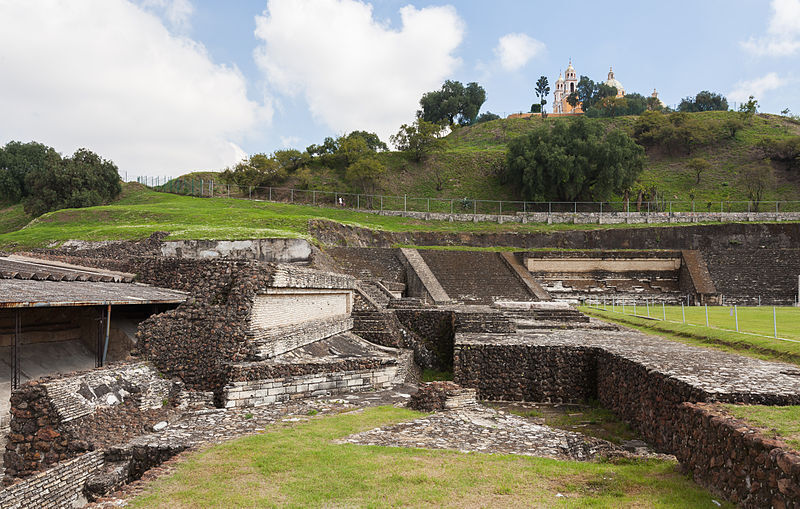
Known as Tlachihualtepetl, the Great Pyramid of Cholula is the largest pyramid by volume in the world. It stands only 66 meters (217 feet) tall, but its base measures 450 by 450 meters (1,476 by 1,476 feet), covering a vast area. Built around 300 BC, this pyramid has a volume four times larger than the Great Pyramid of Giza. The structure consists of multiple layers, each representing different periods of construction by various civilizations. Inside, the pyramid is filled with a complex network of tunnels and chambers. The Spaniards built a church on its summit in the 16th century, adding to its historical complexity. Today, it serves as both an archaeological site and a religious landmark.
Huaca del Sol (Peru)
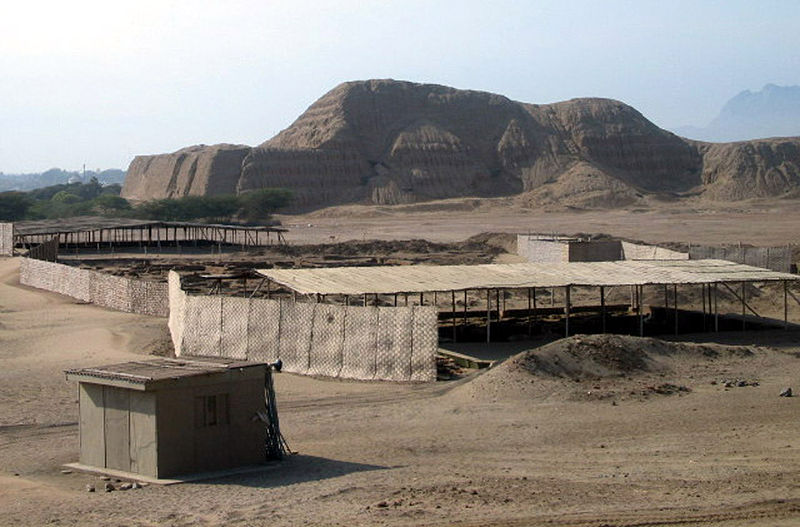
Huaca del Sol, located in the Moche Valley of Peru, is a massive adobe pyramid standing about 41 meters (135 feet) tall. Built by the Moche civilization around 450 AD, it originally reached a height of about 50 meters (164 feet) before erosion and looting reduced its size. The pyramid’s base measures approximately 340 meters (1,115 feet) in length, making it one of the largest adobe structures in the Americas. It was constructed with more than 130 million adobe bricks, showcasing the engineering skills of the Moche people. The pyramid likely served as both a religious center and a royal palace. Inside, remnants of painted murals and artifacts reveal its cultural importance. Despite damage, Huaca del Sol remains a vital link to Peru’s ancient past.
The Pyramid of Djoser (Egypt)
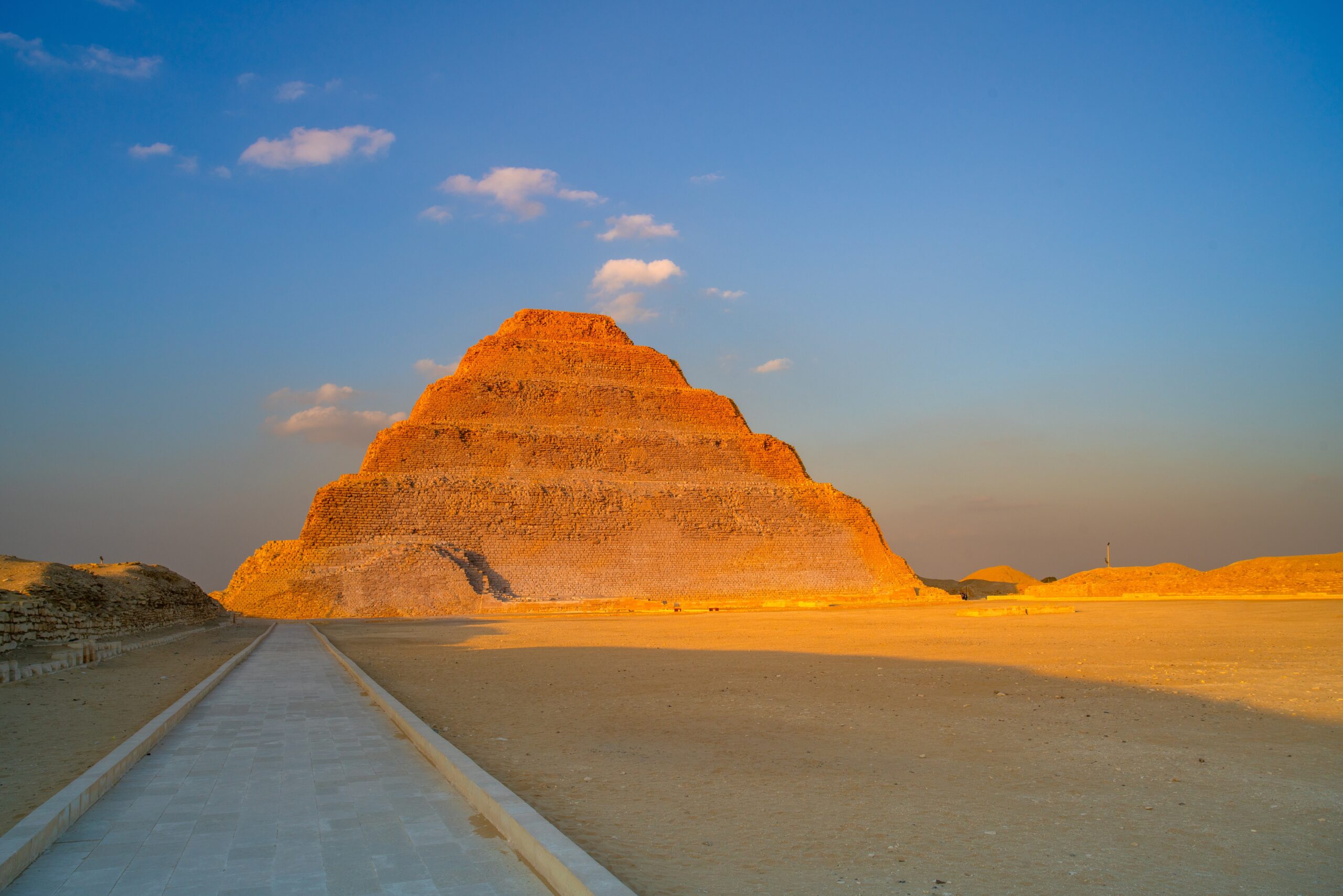
The Pyramid of Djoser, located in Saqqara, is one of the earliest stone pyramids, standing at 62.5 meters (205 feet) tall. Built around 2670 BC for Pharaoh Djoser, it marks a significant evolution in pyramid construction. Designed by the architect Imhotep, it is a step pyramid with a base measuring 109 meters (358 feet) by 121 meters (397 feet). The pyramid is composed of six stepped layers, a revolutionary design that influenced later pyramids. Originally covered with polished limestone, it glowed under the desert sun. Djoser’s Pyramid is surrounded by a complex of temples and courtyards. Today, it is considered a masterpiece of early Egyptian architecture.
Calakmul Pyramid (Mexico)

The Calakmul Pyramid, located in the Maya city of Calakmul in Mexico, stands approximately 45 meters (148 feet) tall. Constructed around 700 AD, it is part of a larger complex and has a base measuring about 120 meters (394 feet) per side. This massive pyramid was built in layers, with each layer representing a different phase of Maya civilization. Its summit provides a view of the surrounding jungle, emphasizing its strategic importance. The pyramid’s construction includes intricately carved stone monuments, showcasing the artistic skills of the Maya. Calakmul was once one of the most powerful Maya cities, rivaling even Tikal. Today, it is a UNESCO World Heritage Site and a symbol of Maya culture.
Temple IV of Tikal (Guatemala)
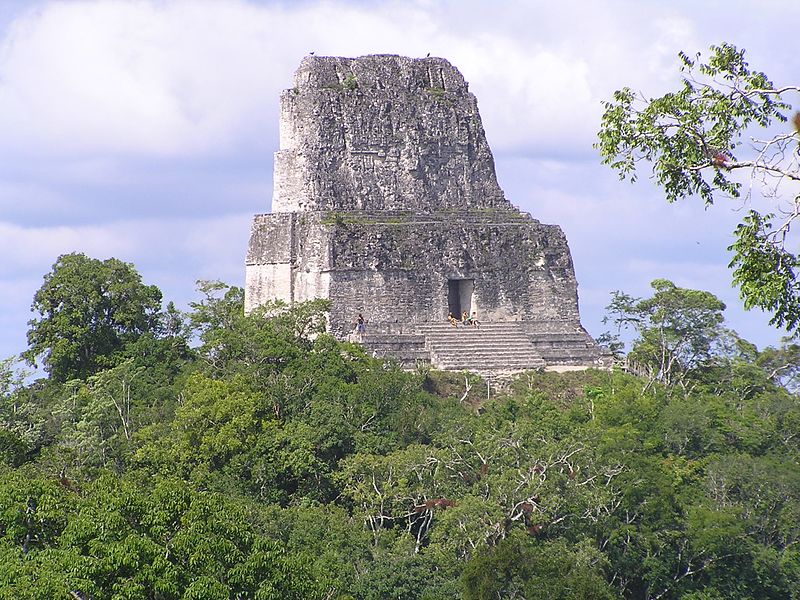
Temple IV, located in the ancient Maya city of Tikal, Guatemala, stands 70 meters (230 feet) tall. Built around 741 AD, it is the tallest structure in Tikal and one of the tallest pre-Columbian structures in the Americas. Its base measures approximately 64 meters (210 feet) by 37 meters (121 feet), supporting a steep pyramid with stairways leading to a temple at the top. The structure was likely constructed to commemorate the reign of Yik’in Chan K’awiil, a prominent Maya ruler. From the top, visitors can view the vast Tikal rainforest, an awe-inspiring sight. The temple is famous for its impressive height and strategic location within Tikal. Today, it remains a vital part of Guatemala’s cultural heritage.
This article originally appeared on Rarest.org.
More From Rarest.Org
15 Historic Buildings at Risk of Being Lost Forever
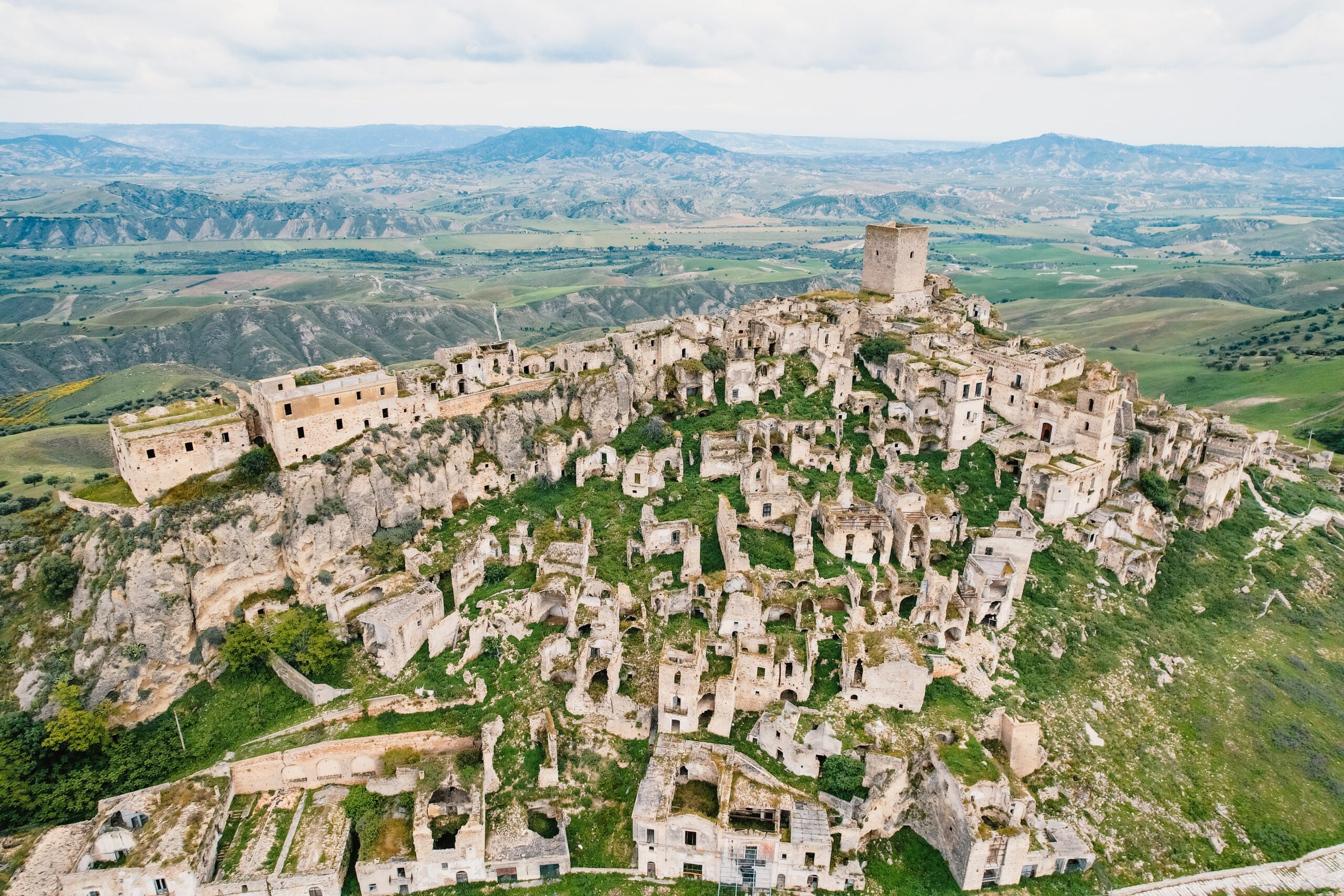
Historic buildings have stood the test of time, but many are now at risk of being lost forever. From war to climate change, various threats put these incredible landmarks in danger. Read more.
19 Largest Road Networks in the World

Road networks are essential for connecting people, goods, and services across cities, regions, and countries, shaping the backbone of global infrastructure. The world’s largest road systems span millions of kilometers, covering diverse landscapes from vast deserts and dense forests to bustling urban centers. Read more.
15 Hidden Underground Cities You Didn’t Know Existed
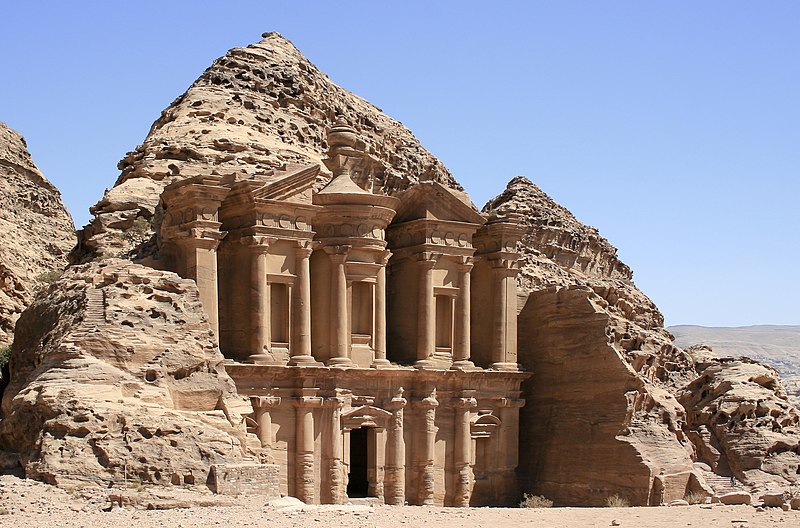
Hidden beneath our cities and landscapes, there exists a network of underground worlds that many people never knew existed. These cities, carved by ancient civilizations or crafted in modern times for practical and defensive purposes, reveal incredible feats of engineering and resilience. Read more.
